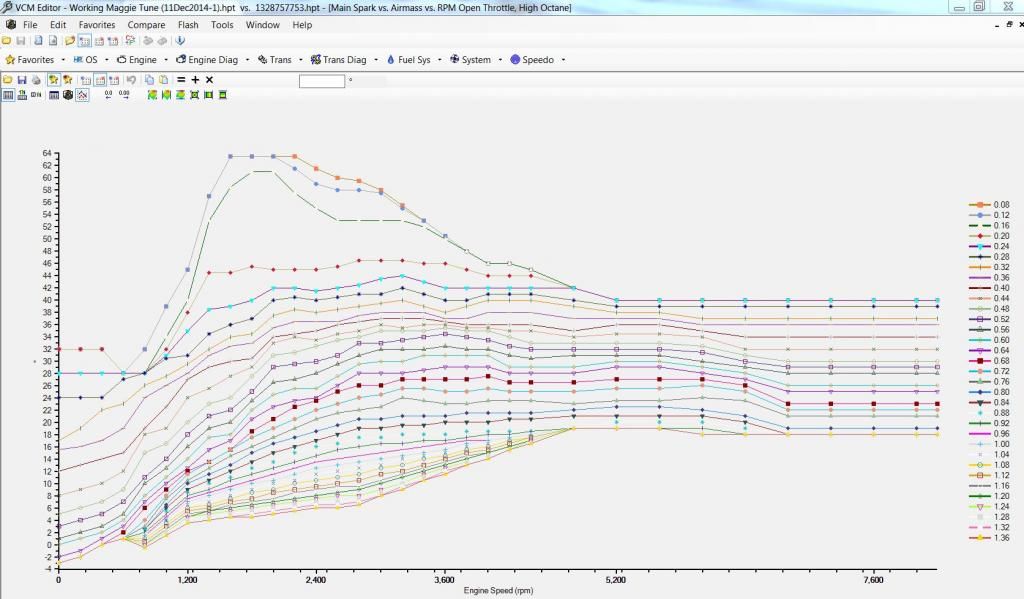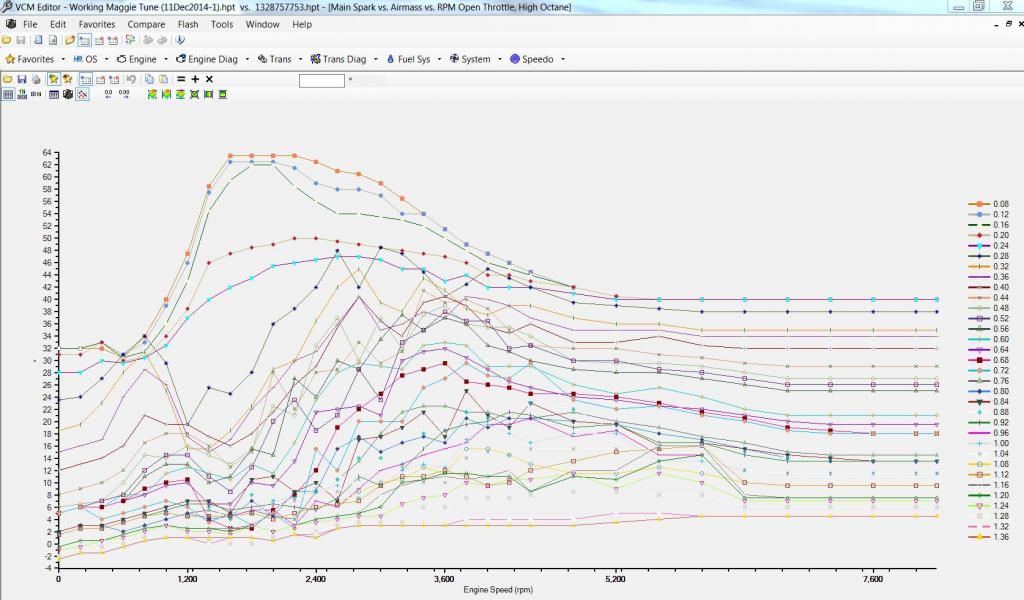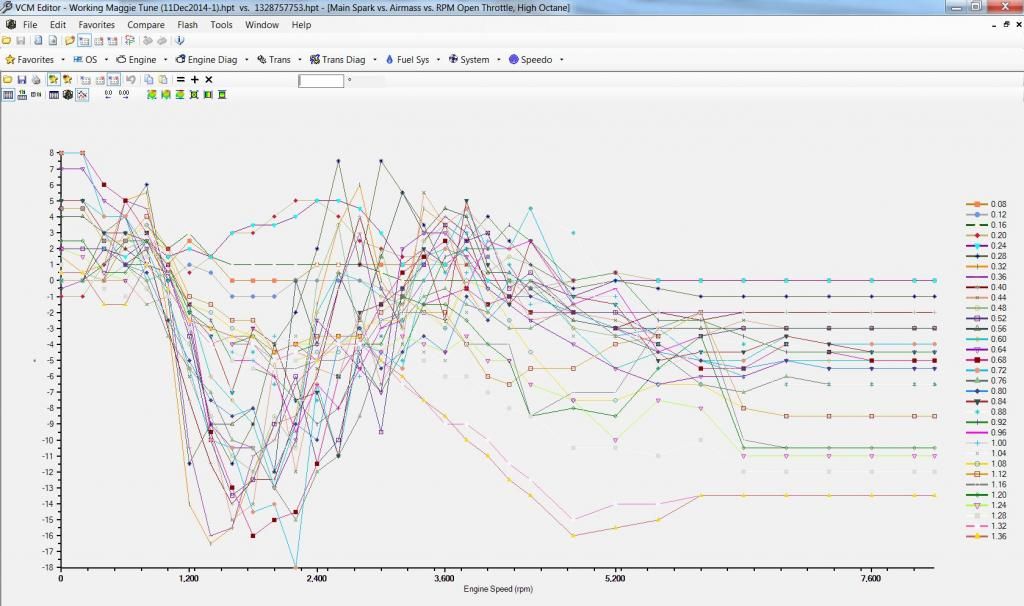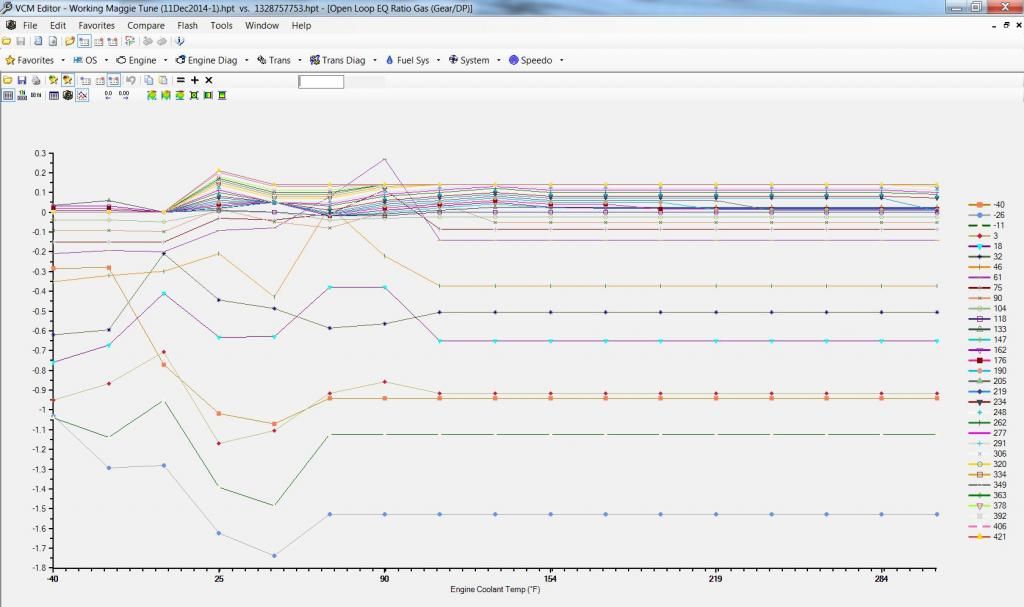
Originally Posted by
Aaron407

My car sat outside all day today, and the coolant temperature showed as -2 C (28 F) on my Aeroforce. I had my laptop and tuner along to log a scan, but it decided not to cooperate and wouldn't boot into windows. So, after sitting in the car for five minutes while the computer tried to boot up and the windows fogged up, I fired it up, and it still had the same issue after all of the changes noted above (with a few small adjustments to smooth things out and not affect other scenarios). It was fighting down around 100 RPM to stay alive until I tapped the throttle to give it more life, after which it ran just fine. Man, I wish I could have grabbed a scan as I'm thinking that there's really not much else to work towards without one to shed some light on things. Hang in there with me, I'm sure I'll need some help interpreting...
EDIT: Attached is the newest tune that I was running today (hopefully the forum attached the correct one).
EDIT #2: I've also attached a config file that I was going to use for scanning the startup. If there's anything that I can/should strip out of it or change, please let me know.




 Reply With Quote
Reply With Quote



